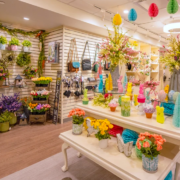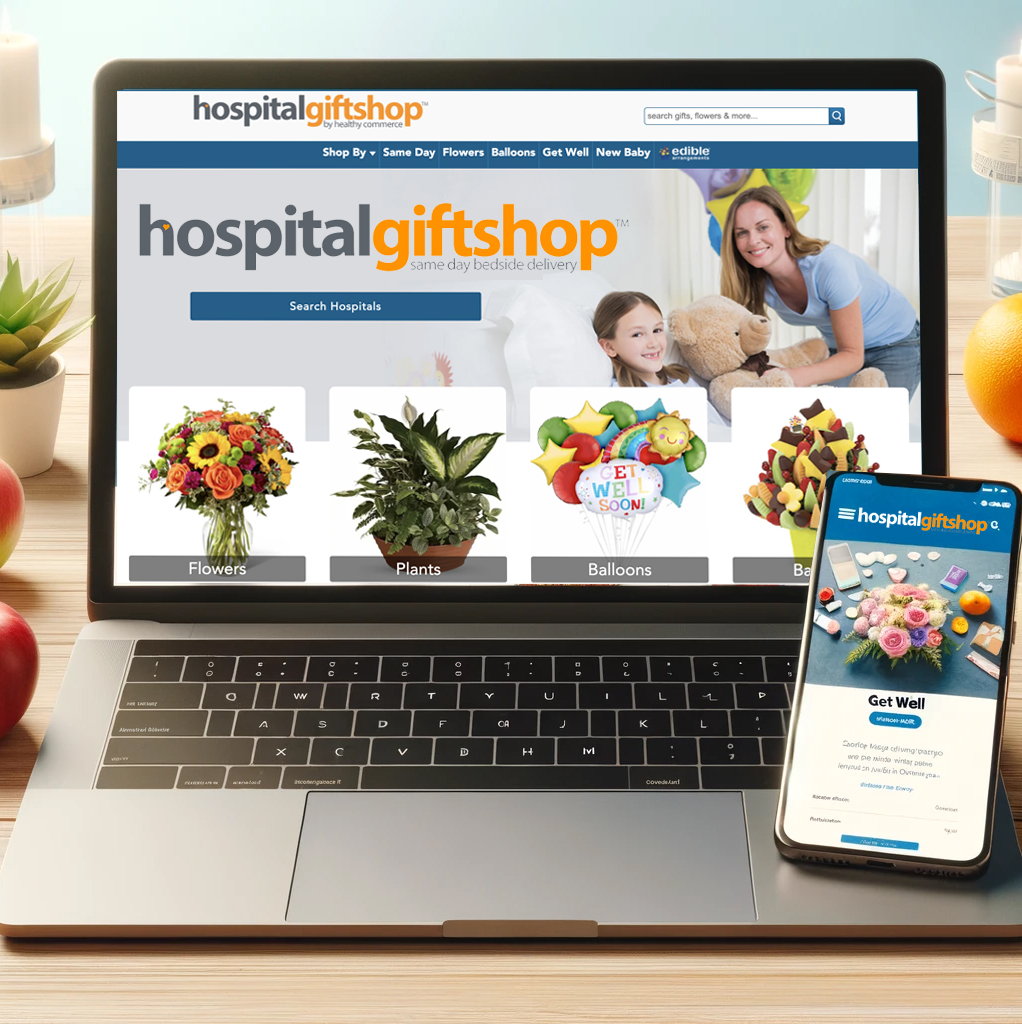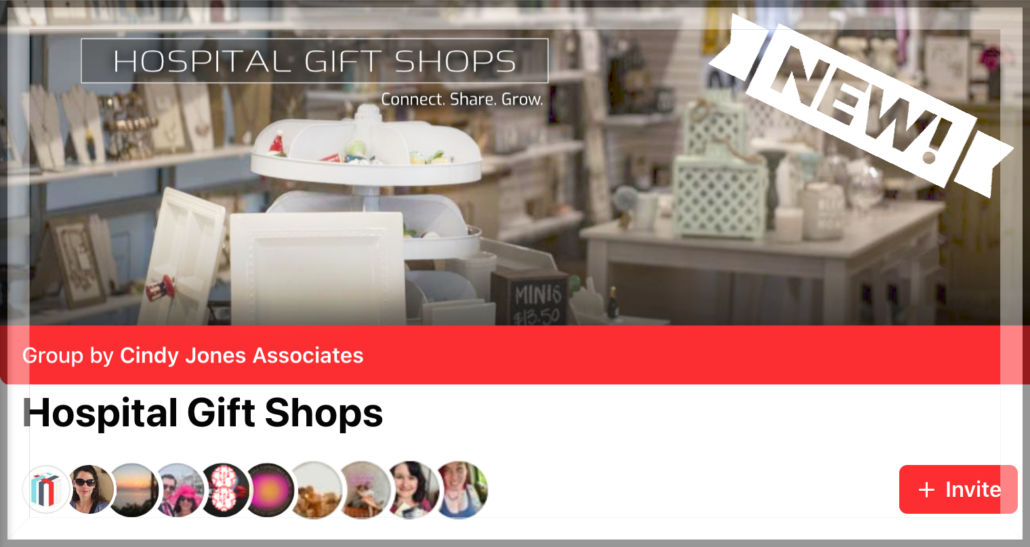Cindy’s Newsletter for Gift Shop Managers | March 15, 2024 💮
| Newsletter for Gift Shop Managers |
The Newsletter for Gift Shop Managers delivers practical, actionable content for gift shop managers, buyers, and volunteers. Since its launch in 2001, it has been a free, independent publication helping retailers optimize operations, increase revenue, and connect with one another. Starting in 2025, the newsletter will be published mid-quarter —in February, May, August, and November.
Its value comes from a close-knit, engaged community. We invite you to leave a comment or join the conversation in the Hospital Gift Shops Facebook Group, a private community for hospital gift shop professionals.
MARCH 15, 2024
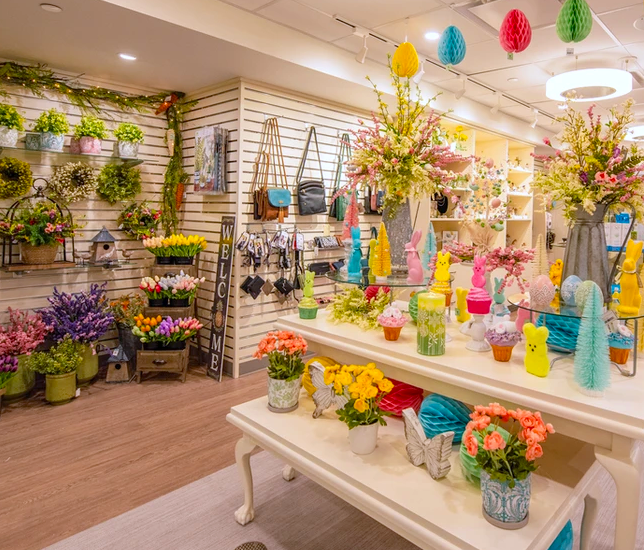
CGH Medical Center, Sterling, IL
What exactly is in your shop window?
In an ideal retail scenario, you would be excited about products at market, mentally plan a store window around them, order extra and locate display props all in the same day. But, that’s a dream world. Realistically, it’s a lot to think about and a big effort.
Here are some ideas for managing and tracking store window displays:
Catalog your window merchandise
- Create a list of every item that goes into a window display. This should include apparel sizes and the retail price of every item.
- Take a picture of the final window display for reference. Printed it and place in a binder with the list of merchandise.
- Write helpful notes on the list like, “Porcelain bunny boxes, north window – stored on the top left shelf in the back room.”
- Assign someone to check the stock of “window items” regularly and remove items with little or no in-store stock. Also update the before-mentioned list.
These procedures help when customers ask about an item they saw in the window.
What not to put in your windows
- Staff. You don’t want staff climbing in window displays while a customer waits!
- Unless you purchased a statement item specifically for your window, do not put one-offs in your window displays.
- Do not create a display around products for which you do not have adequate stock in-store. Think a product will be a top seller? Order extra if you plan to use them in a window display.
SOURCE: Retail Details
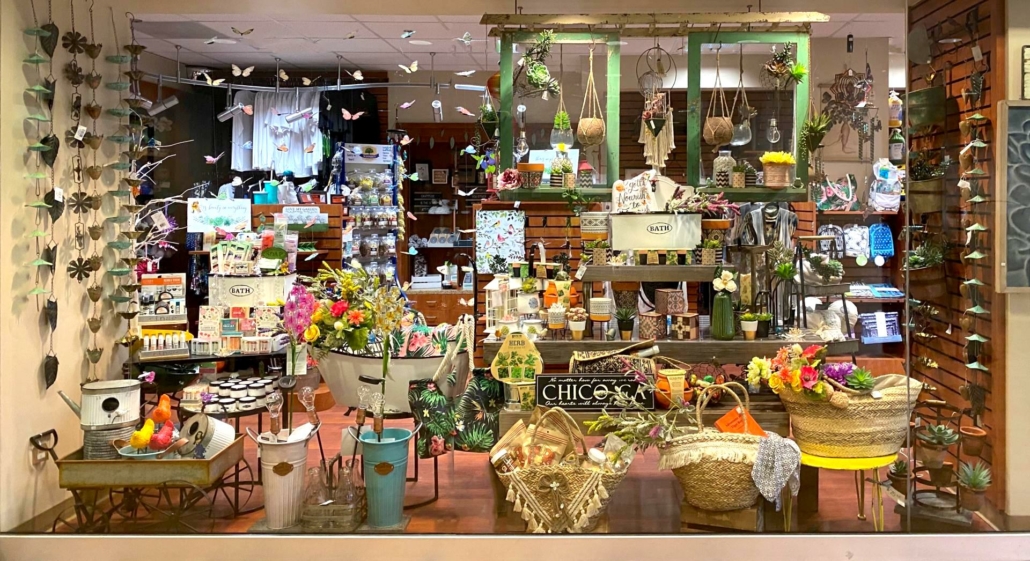
SPONSOR
HospitalGiftShop.com
The easiest way to open an online shop!
– Open for business 24/7 with an online and mobile shop
– 20+ years of trust from hundreds of leading hospitals
– We manage your online shop and orders for you
– Zero fees, simple set up
– Expand your product selection & increase revenue effortlessly!
Join our trusted network and revolutionize your shop’s reach!
More information email: partners@hospitalgiftshop.com
More information link: HospitalGiftShop
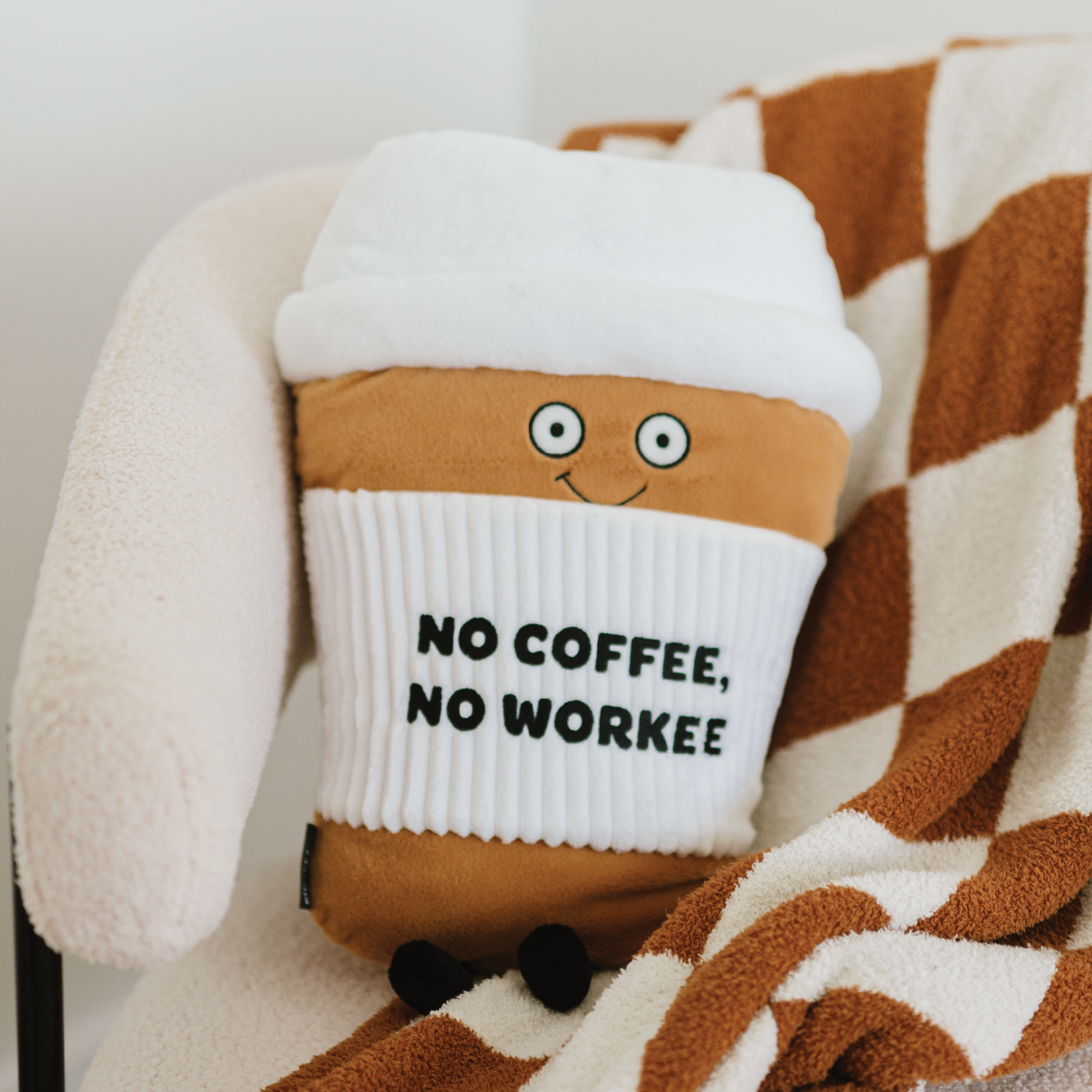
SPONSOR
PUNCHKINS
Punchkins is a new brand of plush that’s stuffed with personality.
Each plushie features a punny punchline that’s so relatable it’ll make you LOL.
Our plushies and pillows are made with high-quality materials, making them soft yet durable.
They’re the perfect accent piece for any home or office.
Punchkins Wholesale • Punchkins.com • 2024 Catalog sales@punchkins.com • 443-212-8670
How Hydra Health is transforming the hospital gift shop
Retail TouchPoints / Feb 21, 2024
Hospitals and medical campuses typically look at retail as an essentially insignificant element in their patient, visitor and employee experiences. That translates into gift shops and cafeteria spaces that are often sterile environments featuring the same mediocre-quality products and pre-packaged foods. Marie Kloor and her firm, Hydra Health, are focused on changing that.
“Our mission is to transform spaces that have traditionally been kind of an afterthought and turn them into beautiful, customer-centric and revenue-generating spaces,” Kloor said in an interview with Retail TouchPoints. “Most funding goes into clinical operations, but a huge part of your experience of being on site is non-clinical, and it’s low-hanging fruit to really rethink hospital retail.”
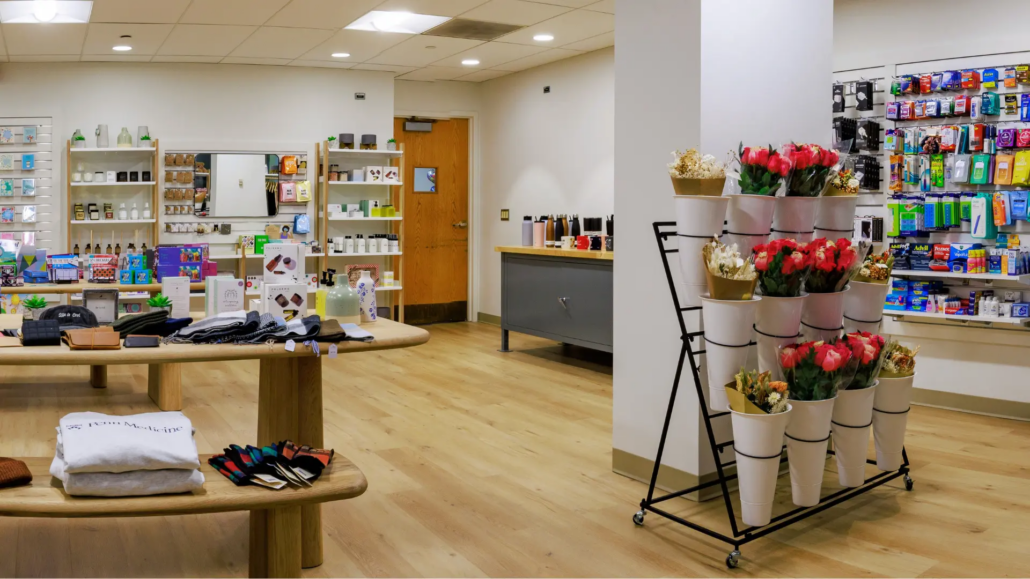
Taking inspiration from the spa and wellness markets, Hydra Health aims to bring innovation into hospitals and medical campuses, transforming their retail spaces into high-value, amenity-driven environments. As part of HHP (Health Hospitality Partners), a healthcare amenities company, Hydra Health has implemented its experience model inside the Geisinger Henry Cancer Center in Wilkes-Barre, PA and Penn Medicine’s Hospital in Philadelphia, with plans for further expansion in 2024 and beyond.
“We focus on bringing in a retail experience that feels modern and value-additive to the employees, patients and visitors on-site,” Kloor explained. “And then we expand that to create amenities that actually serve and provide what people need.”
Applying ‘Retail 101’ to healthcare environments
Because these spaces are often volunteer-driven and sometimes perceived by leadership as a cost center, Hydra Health has developed a business model in which it funds the build-out and design of the spaces and develops a revenue- and profit-sharing model with the healthcare facility.
“We’re not asking for an investment from the hospital because we know they already have a lot of other things they’re using their budgets for, and we also have certain brand and design standards we want to uphold,” Kloor said.
Stores also include a curated product mix that includes personal care items, apparel, snacks and refreshments, books, magazines and gifts, to ensure there’s an array of products that meet the needs of all possible visitors.
In typical gift shops, “you see a lot of things behind glass display cases, but what people are usually looking for is some deodorant or even a hairbrush,” she said. “So what we’ve done, which is kind of Retail 101, is see who our users are, apply more of a design-thinking approach, and then build our product selection and stores around the users. This ends up generating more revenue for the hospital. We’re moving from a cost center to a profit center. While this model is new and innovative for the hospital and healthcare industry, it is, in a sense, applying some of the most basic retail principles.”
Hydra Health conducts a series of focus groups with people it knows will be using the spaces daily. However, interviewing patients and visitors is difficult due to HIPAA rules, so the team extensively engages with guest services and patient advocates within the hospitals and medical campuses. This data informs how diverse assortments need to be, because these stores serve both long-term stays, which sometimes require needs like sleepwear and bedding, to short-term needs like toothbrushes and denture glue.
Creating an ‘on-site respite’
Patients, visitors, nurses and doctors will doubtless agree that medical environments can sometimes feel emotionally draining and overwhelming. That is why taking cues from spas and wellness spaces is so critical to Hydra Health’s design aesthetic. With soft lighting, neutral color palettes, rich textures and uncluttered displays, the spaces are designed to feel welcoming and light.
“Our goal is that, when people walk into our stores, they know they’re in a non-clinical space,” Kloor said. “We design our stores so that they could fit in downtown Manhattan or a cute boutique area; we do not follow the hospital design guidelines.”
Lighting is especially crucial, since natural light is often lacking in these spaces, Kloor noted. “We’re often in an interior area so it’s all about making things feel light and bright, leading with a more welcoming experience and removing the yellow lights that you find in clinical settings. We also think about texture and adding greenery – real or fake – wherever possible.”
Depending on the distinct needs of a specific community, Hydra Health also can include amenities and services such as lounge spaces, lactation rooms, beauty bars, fitness suites, play areas for kids and even respite rooms for nurses and doctors to disconnect. One thing that Kloor and her team discovered in their focus groups is that, while all facilities and medical centers put patients and visitors at the center of their retail and cafeteria design processes, they often overlook what their employees want.
“About 80% of our repeat users are the employees and staff, so bridging that gap, and building these spaces for the employees that are going to be there not only every day, but multiple times a day, is a little bit different,” Kloor said. “You hear a lot about nurses being on strike and healthcare employees getting burnt out, eating out of vending machines, drinking stale coffee…what can we do to help create experiences that are going to help attract and retain employees as well as help manage clinical operations?”
Design concepts and even merchandise assortments are further customized based on the facility’s geographic location. For example, at Penn Medicine in Philadelphia, there is a corner dedicated to Philly sports, while the cancer center in Northeastern Pennsylvania has a relaxing lounge space and even a beauty bar with non-toxic products and wigs for cancer patients.
“We wanted people to feel like if they needed a break from the clinical side of things, they could come in and lounge,” Kloor explained. “We also have respite rooms open to staff, patients and visitors to come take a nap or just have a moment. I think staff uses them to take a break and have active recovery. When you’re on a shift in a hospital, you’re never off; but with these spaces, you can remove yourself and have a chance to be refreshed.”
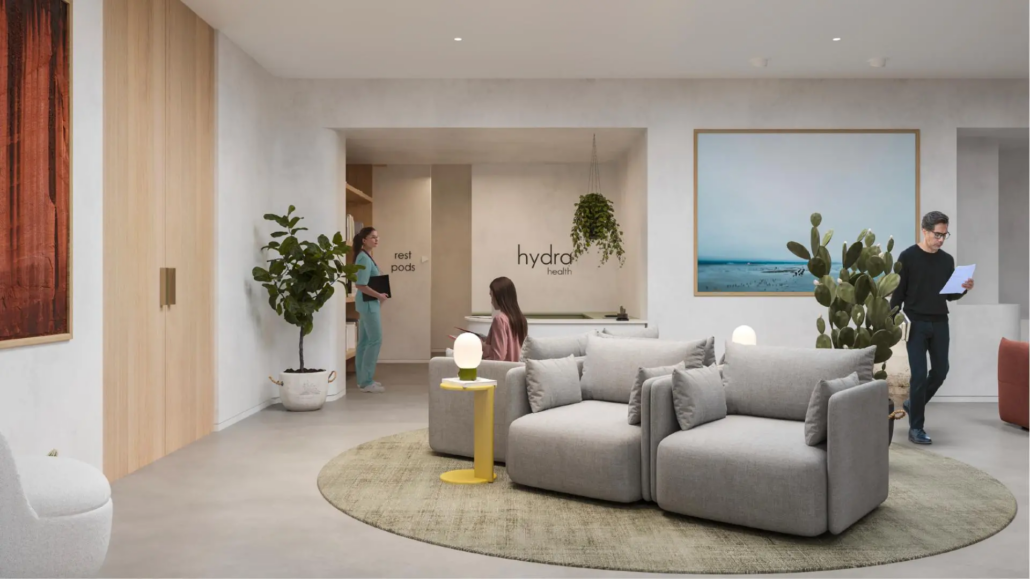
Taking a data-driven approach to new formats
While Hydra Health takes many of its design cues from high-end fashion boutiques and spas, Kloor also is inspired by more utilitarian formats and experiences, especially to serve nurses, doctors and other hospital employees.
“We’ve taken some inspiration from a more modern airport for those who are walking through and need something in a pinch,” Kloor said “They’re not necessarily looking for a drawn-out shopping experience, so we’re trying to merge in that modern airport convenience.”
For example, offering fast and convenient payment experiences via mobile devices or even employee badges takes cues from airport retail’s “scan and go” models. Hydra Health is strategizing a “next iteration” format concept that includes different fully automated stores and other tech-driven spaces.
“For the future, we’re looking at a hub-and-spoke model, where we have this Hydra Health core retail shop and then have outposts in other areas of the hospital, where it’s a micro-market that is all self-checkout or that uses video camera technology, or a kiosk that can pop up in different areas of the hospital for different occasions,” Kloor explained. “Although we want to be a hub, we can’t reach every area now.”
Hydra Health uses data to inform which models work and where there is future opportunity for experience innovation. The company measures success by looking at trends among its different users groups: hospital staff and employees, hospital visitors and patients. Then the Hydra team can drill into top-performing categories and use traditional retail metrics, such as monthly performance and revenue per square foot, to further optimize the store layout, experience and services.
Although profit is a key metric, Hydra Health doesn’t plan to lose sight of its North Star: loyalty. To keep a close eye on this, the company has implemented various channels for its diverse consumer base to share thoughts, opinions and general feedback.
“We have rewards cards, we do community programming, we have suggestion boxes and a QR code people can scan to share their feedback,” Kloor noted. “We want to maximize revenue and have the products that people need, but we also want to make sure that we have approachable pricing and are best serving the people who are our customers.”
SOURCE: retailTouchPoints
COMMENTS:
I just finished reading the article about Hydra Health and have to say I found it rather offensive. The article made several derogatory and quite frankly incorrect remarks about Hospital Gift Shops. I felt compelled to respond. At my hospital, the Gift Shops employ five full-time employees as well as a manager and assistant manager. We are all hospital employees. Our department falls under the division of support services, acknowledging the significant contribution we make to the staff, patients and visitors’ satisfaction. Not ‘insignificant”. My hospital is expanding with an additional 900,000 sf building and we are planning a beautiful new 1200 sf Gift Shop located in the center of the 1st floor lobby. Hardly an “afterthought”. Not sure where the author has visited a hospital Gift Shop but I have never been in one that didn’t carry “what people are actually looking for”. – Judi Stallings, UNM Hospital Gift Shop, Albuquerque, NM. 650 beds. 3/29/24
FROM CINDY
Judi, thank you for sharing your valuable perspective. We largely agree with your observations. While many hospital shops are thriving, some are struggling, and Hydra Health may be encountering these situations. However, it’s important to avoid generalizations as they can be misleading, as you pointed out. For example, this is far from the truth, “In typical gift shops, “you see a lot of things behind glass display cases, but what people are usually looking for is some deodorant or even a hairbrush…”
The article does offer several insights that managers may find useful, like Hydra Health’s retail model. It also highlights that companies such as HydraHealth, CloverKey (owned by Kelli’s), and Lori’s are poised to step in and manage shop operations, which can have both positive and negative consequences. We strive to present balanced content, recognizing that each situation is unique.
We knew -and hoped!- it would spark a discussion. Thank you for starting this important conversation. – Cindy
WEBINAR: How can AI solutions reduce shoplifting losses?
How can shoplifting losses be reduced by AI?
Monday, March 25, 2024
3PM EDT
Hosted by Veesion
In 2022, retail shrink surged 19% to $112 billion, with external theft making up 36% of losses, likely underreported.
Learn how artificial intelligence can help you monetize your video surveillance cameras and significantly reduce merchandise shrinkage.
Is shoplifting really surging?
The New York Times / Nov 29, 2023
Is the U.S. in the middle of a shoplifting wave? Target and other retail chains have warned of widespread theft. News outlets have amplified the story. On social media, people have posted videos of thieves looting stores.
But the increase in shoplifting appears to be limited to a few cities, rather than being truly national. In most of the country, retail theft has been lower this year than it was a few years ago, according to police data. There are some exceptions, particularly New York City, where shoplifting has spiked. But outside New York, shoplifting incidents in major cities have fallen 7% since 2019, before the Covid pandemic.
Why has the issue nonetheless received so much attention? Today’s newsletter tries to answer that question while taking a deeper look at recent shoplifting trends.
Shoplifting Trends: What You Need to Know
The most up-to-date source is the report, Shoplifting Trends: What You Need to Know, published by the Council on Criminal Justice. A few key takeaways from the report:
New York (64%) and Los Angeles (61%) had the largest increases in reported shoplifting among the study cities from mid-year 2019 to mid-year 2023. St. Petersburg (-78%) and St. Paul (-65%) had the largest decreases.
Comparing the most recent trends, from the first halves of 2022 and 2023, Los Angeles (109%) and Dallas (73%) experienced the largest increases among the study cities; San Francisco (-35%) and Seattle (-31%) saw the largest decreases.
The median value of goods stolen in shoplifting incidents grew from approximately $75 in 2019 to roughly $100 in 2021.
Click image to select your city ↓
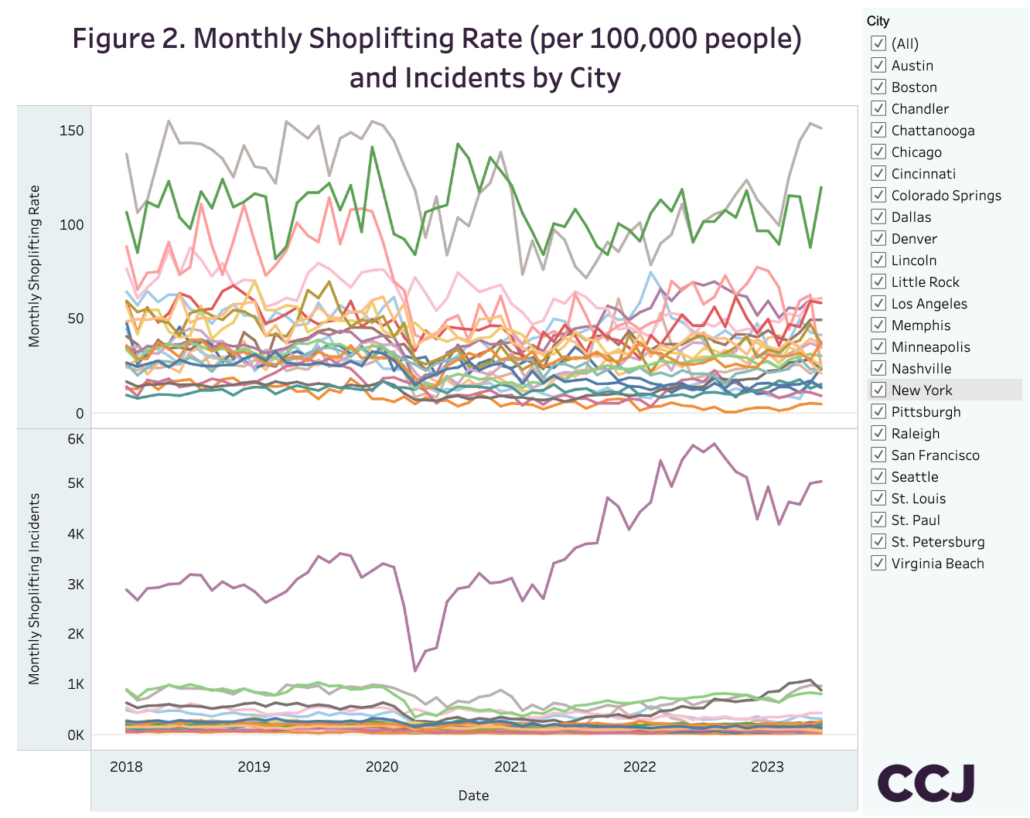
Behind the smile: Artificial customer greetings
Show interest in your customers and go all out to understand their needs so they know you can and want to help them.
Be authentic, not scripted. If you’re faking it, they will know.
Speak with your customers, not to them.
Make eye contact and use a pleasant voice. Don’t mumble.
Come out behind the counter.
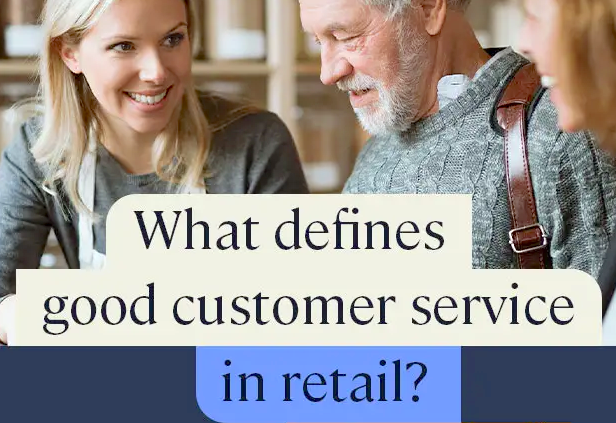
Q. Has anyone else set up a “temporary” store?
Q. Has anyone else set up a “temporary” store? Construction started on a large addition/renovation to our hospital, for 24-30 months. It is going to affect our volunteer gift shop. We are able to set up a small “store” in a hallway, which will require us to secure overnight. – Martha Burke, Rome Health, Rome, NY. 130 beds. 1/17/24
They moved our to a portion of a conference room for about 6-8 months. How long are they relocating you? Do you get a bigger shop? When I worked at a kiosk at the mall years ago, we had a tarp like that went around and had a lock on it. – Tricia E. 2/24/24
Our shop was closed for about 4 months in 2022. I found a vacated space and used it to set up a temporary shop. We mainly sold our logo wear and then had a “garage sale” to move inventory that had been in our storage room for more than a couple years. – Alison K. 2/27/24
Comment here or on the Hospital Gift Shops group on Facebook.

Have you faced temporary “relocation”? Share your experience.
Community makes the world go around and a dose of retail survival!
Thank you!
♡ Connect. Share. Grow. ♡
SPONSOR
i3 Verticals – NCR Point of Sale Solution
A “Volunteer Friendly” NCR Point of Sale solution
for hospital gift shops. Easy to learn! Easy to use!
Payroll Deduction and Inventory Management available.
Take your gift shop to the next level!
Ask for a FREE copy of our “Hospital Gift Shops:
Tips for Success” booklet.
887-809-9980
www.i3pos.com
Top 5 free tools for generating subject lines
Marketing email campaigns are the cornerstone of retail outreach. They show up in your inbox. All. Day. Long. So, what makes you open one and trash another. Meet the subject line. The most important element of any email. If it doesn’t drive the audience to open your email, then it’s a “dead send”. Your open-rate will be low and the email didn’t do it’s intended job. That’s why it’s vital to put in the time learn to write click-worthy subject lines.
Beyond the fundamental best practices – write for your audience, avoid spam words, limit one exclamation mark max, use active power words, be succinct and highly legible – there is a ton of information online to educate and guide you. Check out 8 Simple Rules for Writing Stellar Email Subject Lines or guides from Hubspot.
By the way, if you’re not sending marketing emails, subject line skills are helpful for writing shop signage, promos in hospital bulletins, social media posts, flyers and anything else that represents the gift shop. Everything you write for your shop is a form of marketing. Make it good and make it count!
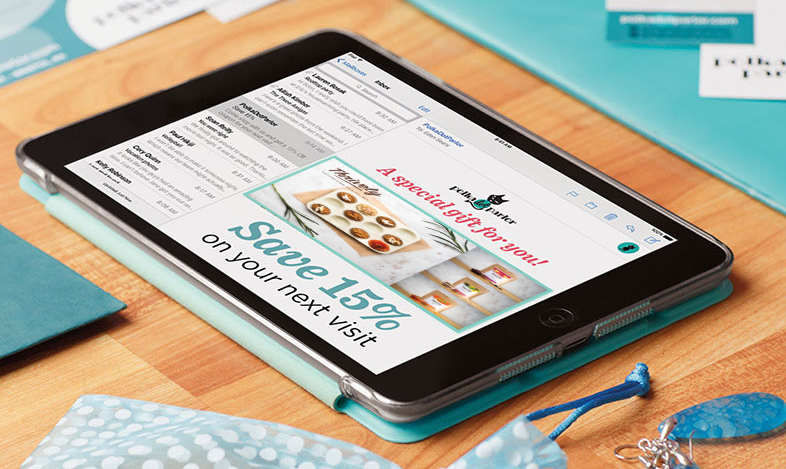
We love using AI-powered subject line generators. They harness vast amounts of user data and sophisticated language-learning capabilities to help you spark interest and enhance your open rates. We use ChatGPT to help write subject lines for our sponsor’s email blasts, in which you are the recipient!
🎯 TIP: Create a folder “Email Blast Examples” and drop in incoming marketing emails with strong subject lines. Refer to the folder to help generate approaches, formatting, ideas, and tactics. Adapt them to your audience.
AI-powered subject line generators and testers have significantly advanced in recent years. They harness vast amounts of user data and sophisticated language-learning capabilities to help you spark interest and enhance your open rates. Just remember that AI is not perfect—yet. It’s still in its infancy and learning so to ‘speak human’. We use AI as an assistant, not the author.
Here are a few free AI tools you can use to generate subject lines you’ll actually want to use.
Chat GPT
Best for: generating free ideas
ChatGPT is only as good as the prompts you give it. It may require some extra prompts and manual edits to fit your email’s tone, but it’s a helpful tool to get ideas flowing. Learn how to use it to get useful results.
SubjectLine.com
Best for: refining a draft
SubjectLine.com grades your subject line and offers AI-generated improvements. Some suggestions were too long, but in general, we liked the tonal adjustments offered by the AI.
Refine
Best for: boosting open rates on marketing or promo emails
Refine uses an advanced algorithm to predict the potential open rate of your subject line based on your industry and list size. We could see this being super useful for A/B testing important promotions or transactional emails.
Subjectlinegenerator.com
Best for: generating good ideas, fast
This tool is excellent for getting many great subject lines quickly. It generates 10 catchy subject lines in no time, and they’re surprisingly good.
Omnisend Subject Line Tester
Best for: enhancing your copywriting skills
Omnisend grades your subject line and provides tips to enhance readability for both desktop and mobile screens. Aim for a grade of 90% or so to get the best results. We loved the unique coaching feature, making it our top pick.
Good luck and happy mailing!
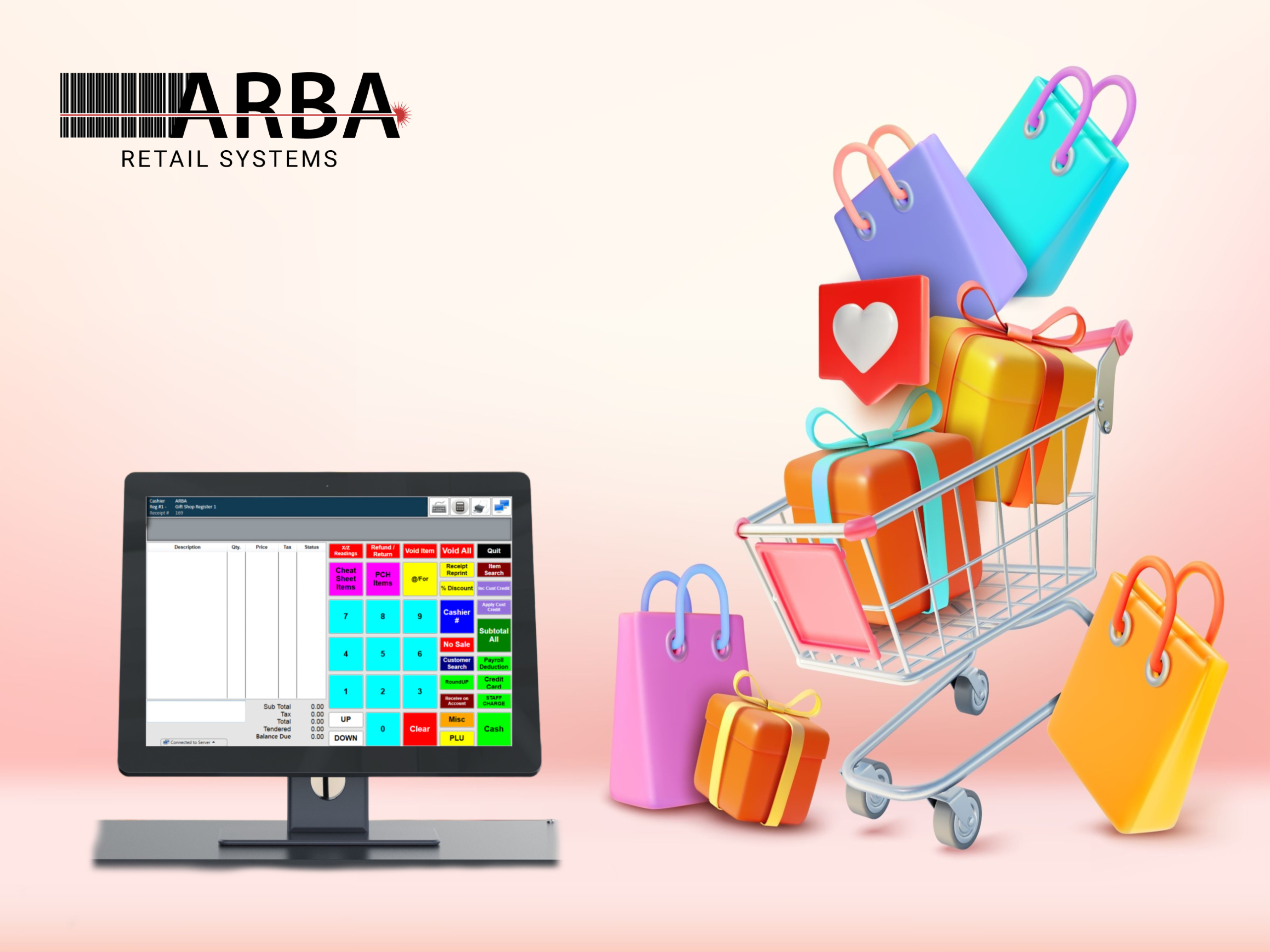
SPONSOR
Designed for Hospital Gift Shops, the volunteer-friendly ARBA POS system manages your inventory and automates payroll deductions. Easy current inventory import.
Optional online store pulls from the same inventory as in-store and accepts payroll deductions and credit card payments.
info@arbapro.com
630-620-8566
www.arbapro.com
HGS Virtual Gatherings
Wednesday HGS Virtual Gatherings! Hosted by Lilly Stamets, Owner of Premier Retail Consulting and Retail Subject Matter Expert for the California Assoc of Hospital and Healthcare Systems.
📅 When: Every 2 weeks on Wednesdays
What to Expect
Safe Space: An exclusive and secure environment for all gift shop professionals.
Attendees: Connect with new and seasoned buyers, managers, supervisors, and volunteers.
Purpose: Ask questions, share insights, get answers, or simply vent – it’s your space!
Important Notes
Invitation-Only: By invitation only, ensuring a curated and comfortable environment.
Exclusions: No vendors, hospital leadership, or publications – just a community of gift shop professionals.
Access: We meet online using Zoom!
Contact Lilly at lilly@lillystamets.com or lstamets@gmail.com to join.
UPCOMING HOLIDAYS
| APRIL |
|---|
| Apr 1 – April Fools’ Day 🥸 Apr 7 – World Health Day Apr 15 – Tax Day Apr 22 – Earth Day 🌎 Apr 22 – Passover Starts Apr 24 – Admin Prof Day |
| mAY |
|---|
| May 5 – Cinco de Mayo May 6 – Nurses Day 🩺 May 4 – Kentucky Derby 🐎 May 12 – Mother’s Day May 27 – Memorial Day 🇺🇸 Graduation Season Begins 🎓 |
| JUNE |
|---|
| Graduation Season Con’t 🎓 Jun 14 – Flag Day Jun 16 – Father’s Day Jun 19 – Juneteenth Jun 20 – Summer Solstice Jun 27 – Ntn’l Sunglasses Day 😎 |
FEBRUARY 2024 NEWSLETTER: ISSUE #649
Did you miss last month’s articles, surveys, and discussions?
- Strong January sales signal solid 2024
- GSMA new platform for gift shop managers
- A sure way to generate impulse buys
- A. Gift market stipend and travel expenses?
- Gems & Trends: Hospital Gift Shops Facebook group
- Eastern Long Island Hospital Auxiliary donates $572,000
- Take your displays to new heights, literally!
- Quickcharge POS acquired by Transact
- When inventory actually decreases margins
- Gift Market Calendar
DISCUSSION
Happening now in the Hospital Gift Shops Facebook group!
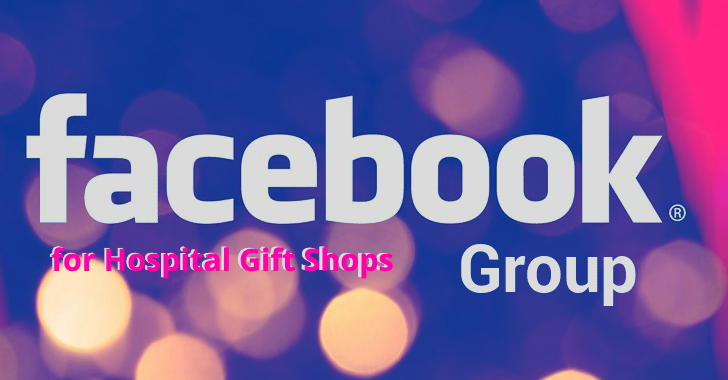
♡ Connect. Share. Grow. ♡
GIFT MARKET EXPENSES
Q. What is the best way to justify the expense of attending a Gift Market? Is it possible to receive a stipend from a current vendor towards the cost of your trip? – Janis Farrington. Gottlieb Memorial Hospital Gift Shop/Trinity Health Systems. Melrose Park, IL
I ask permission of the Auxiliary, the monies saved by going to shows are well worth the price placed on the travel. – Tricia Rochman, Carbondale Memorial Hospital, Carbondale, IL. 154 beds. 1/24/24
We budget for it each year. We are not allowed to accept travel, money or gifts from vendors. – Lynn Harrison, 1/23/24
We enter it into our budget every year. Even when we put a hold on travel at our hospital our COO still approved the gift shop for travel. – Linda Armstrong. 1/23/24
We are auxiliary run so they finance the expenses. – M. Metry. 1/18/24
We budget for Atlanta Mart. – Nancy Williams. 1/17/24
We go to market in Dallas once a year, and order for the whole year. The expense is shared between our Auxiliary and our Hospital. We try to bring back some great cash and carry items and staff are always excited to see what is new, which causes sales to be high the week or two following market. I am looking for ideas on how we can see some cost absorption from some of our vendors, even though we may be too small of a shop to bargain for this. – Kristi King, Ozark Health. 1/17/24
We also use the discounts and specials at market to justify expenses of the trip. Orders that are placed there are for the next 6-9 months. – Rosemary, Phoenix Children’s Hospital. 1/17/24
We use the discounts and specials we receive when writing at the show to justify the expense. The savings usually more than pays for it. We were told we were not allowed to have vendors help pay for travel due to it being a conflict of interest. Sometime the Gift Shows themselves offer assistance. – Karla Glanzman, Seattle Childrens Hospital. 360 beds. 1/17/24
♡ Connect. Share. Grow. ♡
Want to advertise? Click here.
© Cindy Jones Associates, 2022. COPYRIGHT PROTECTED. Redistribution, copying, reselling, re-renting, or republishing is STRICTLY PROHIBITED. Cindy’s Newsletter may not to be forwarded, redistributed, reproduced, reprinted, or posted online without prior permission from Cindy Jones Associates. Subscribers may share one issue with a fellow manager. Thereafter, the manager may subscribe here to receive future issues.

